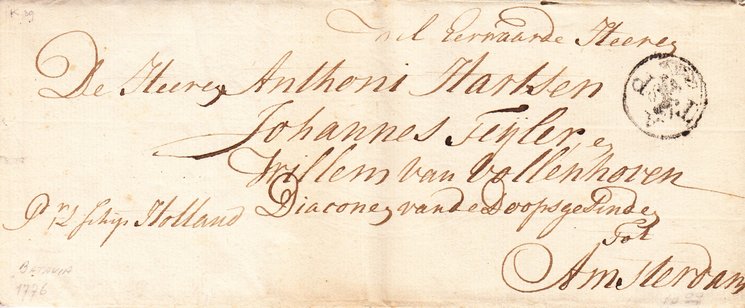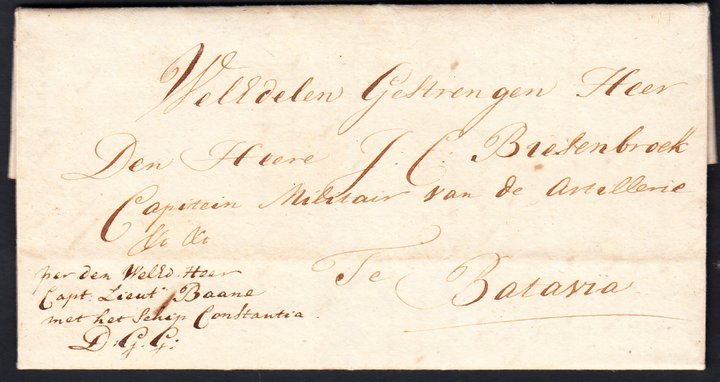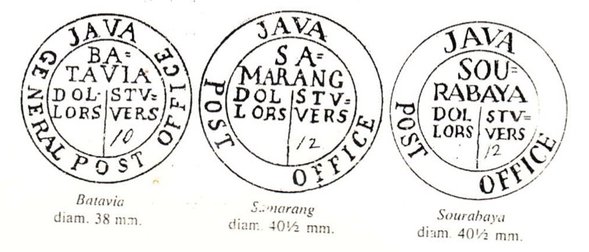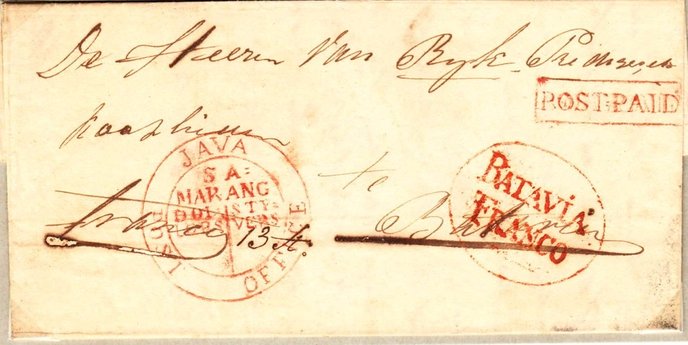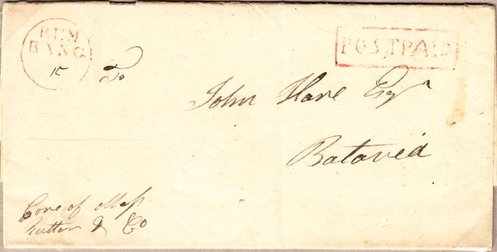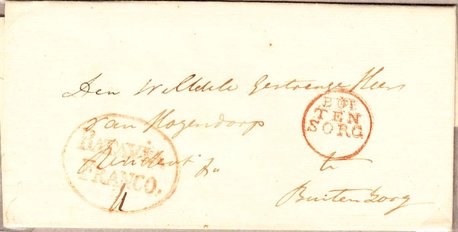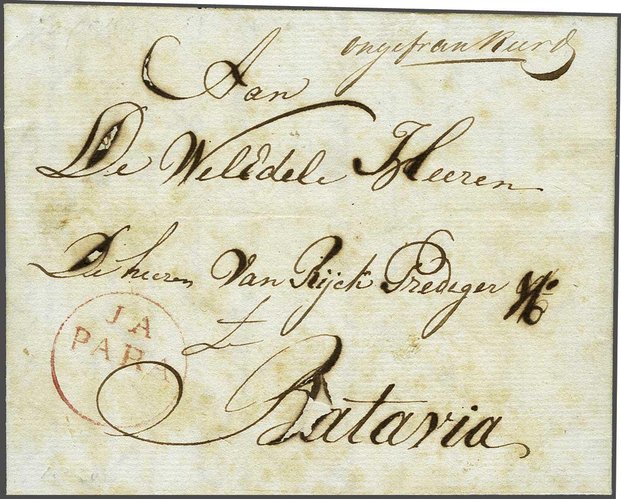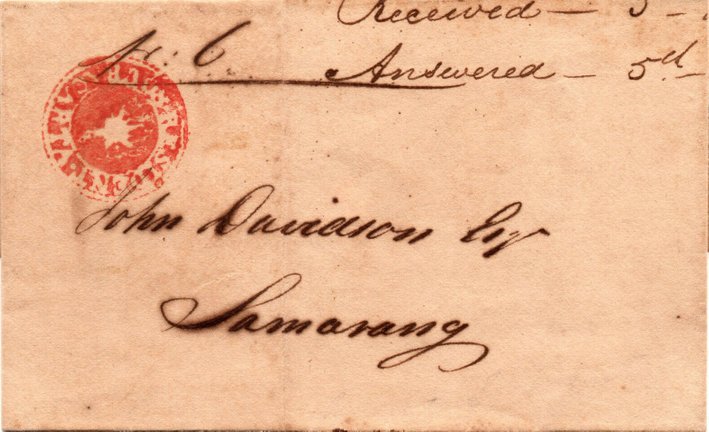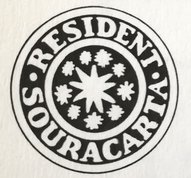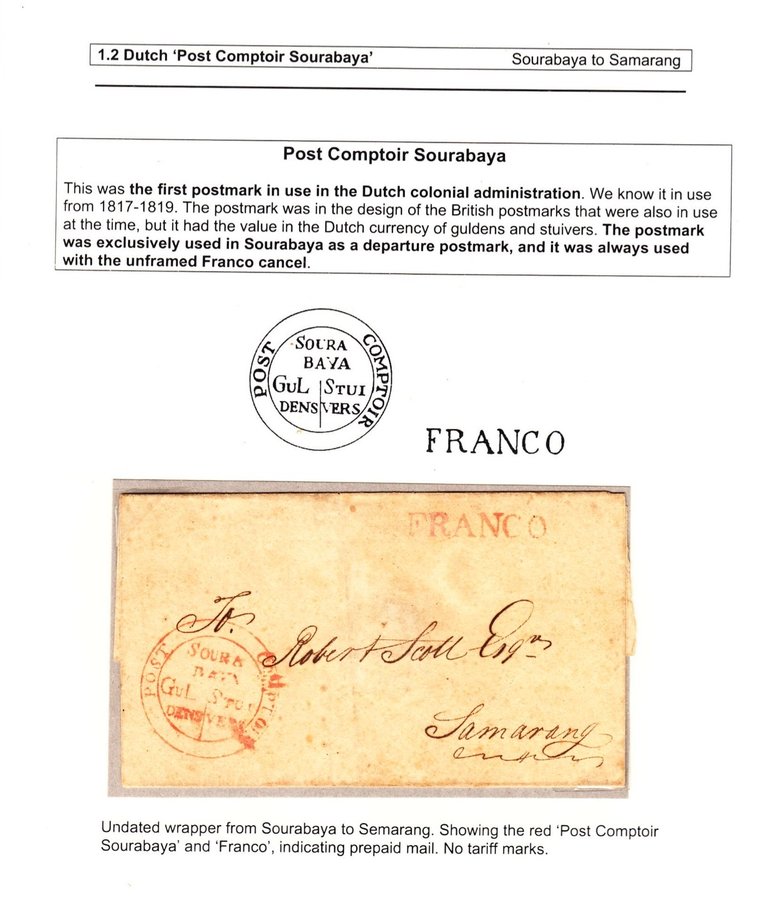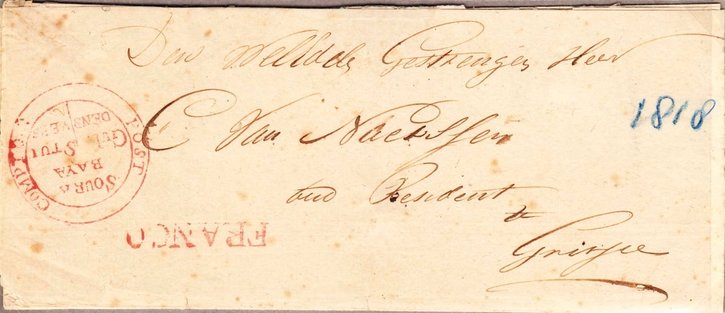The earliest postmarks of the Dutch East Indies administration from 1817
The English administration of the Indonesian islands came to an end in August 1816. But English postal regulations and postmarks remained in use in the Dutch administration until circa 1823. One regulation stipulated that letters had to be prepaid at the post office. Payment by the recipient was not an option. The following English postmarks were in use during this interim period:
Batavia 1776 to Amsterdam by the ship Holland. Postmarked on arrival in the Netherlands ATP lion postmark: Amsterdam Texelsche Port. A rare postmark used before the VOC postmarks.
Delft, 4. May 1787. Sent to Batavia by the ship Constantia, captain Baane. The letter dates from two years before the introduction of the VOC handstamps.
Samarang 9 May 1820, sent to the merchants Rijck, Prediger & Co. in Batavia.
Showing the standard postmarks ‘Java Post Office Samarang’ with value in dollors and stuivers, and the framed ‘Post Paid’. Received in Batavia 14 May.
General Post Office Batavia on undated letter to Grisee. 18 stuivers rate noted in the postmark.
Dated Serandoke (?) 9 Mar. 1820 and cancelled in the post office in Samarang with the large British cancel‘Java Post Office Samarang’, with value in dollors and stuivers. Sent prepaid and manuscript ‘franco 13 St.’. Arrived in Batavia 20 Mar., postmark Batavia of the oval Dutch type in red.
Rembang 29 June 1819 to Batavia. Forwarding note bottom left ‘Care of Mess. Butler & Co.’ Rate of 15 stuiver noted inside postmark.
Undated lettersheet from the British administration, or very early in the Dutch period. From Tegal to Mr P. Langewagen, assistant to the Resident at Samarang. Marked ‘Services’ upper right, which indicates official mail status.
A rare survival of official mail from the early colonial period.
Buitenzorg 28 July 1820 to Rijswijk in the Netherlands. Round Buitenzorg departure postmark in red.
It is uncommon to find the round English-type postmark used on mail to outside the Netherlands Indies.
Batavia 12 Nov. 1819 to the Resident at Buitenzorg. Postmark oval Batavia Franco in red (known 1818-1834). The round postmark of Buitenzorg is here used as an arrival stamp. rate of 11 stuivers noted inside postmark.
Japara to Batavia. Noted "Ongefrankeerd" (unpaid) but without indication of rate.
Letter dated May 23 1815 from Grissee to Assistant Commandant J. Meyer in Indramayoe. Grissee circular mark used as departure mark and negative-impression Indramayoe postmark used as arrival mark.
The Indramayoe postmark was most commonly used as arrival mark, during the years 1811-1817. But it is also known as departure mark.
Partial prepayment:
9 stuivers prepaid (‘Post paid’) at Grissee for distance to Cheribon, the nearest post office along the Great Post Road; the further distance of Cheribon to Indramayoe (40 miles) incurred additional postage of 3 stuivers to be collected from recipient.
Partial prepayment is uncommon; because of partial payment the ‘post-paid’ mark was not used.
A rare example of partially prepaid mail from the end of the British administration.
Resident Souracarta 1823, a somewhat over-inked red strike of this very scarce postmark on letter to Samarang. I know of three covers with this postmark and I doubt that many more will exist.
A most peculiar design of a postmark that was probably produced locally.
The first Dutch postmark of the Dutch colonial administration 1817
Letter to Grissee 1818, marked by the Postcomptoir Sourabaya and accompanying Franco handstamp to indicate prepaid mail. No charge notation.
